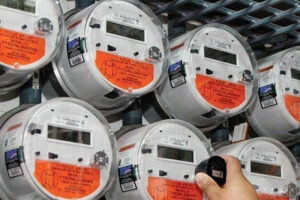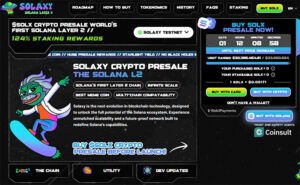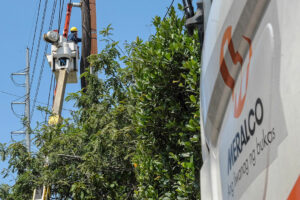(This article is a paid content published on Spotlight, BusinessWorld’s sponsored section, and therefore does not reflect BusinessWorld’s views on the matter. BusinessWorld does not endorse any cryptocurrency and does not have any legal liability on any decisions derived from reading cryptocurrency-related advertisements published on its platforms. Readers are advised to thoroughly research and understand potential risks before availing cryptocurrency products or services.)
When analyzing cryptocurrencies, it’s crucial to understand their role within the broader blockchain ecosystem. Each “layer” plays a unique function, from the foundational chains powering the network to the application-specific platforms built on top.
Layer 1 assets like Ethereum (ETH) and Solana (SOL) are popular for their role in lowering transaction costs. Meanwhile, Layer 2 solutions such as Arbitrum (ARB) and Solaxy (SOLX) focus on scalability improvements and protocol governance.
As the industry evolves, Layer 0 (L0) and Layer 3 (L3) networks have also gained attention for their innovative approaches to connectivity and customization.
Let’s break down how each layer contributes to the blockchain stack and the unique benefits they bring.
What Are Blockchain Layers?
Here’s a simplified overview of what each layer does:
Layer 1 (L1): This is the base protocol where blockchain transactions are verified and stored. It provides the core infrastructure and security.
Layer 2 (L2): These protocols sit on top of L1s, designed to boost transaction speed and reduce congestion.
Layer 3 (L3): A newer concept, L3s are built for specific applications, offering highly customizable environments.
Layer 0 (L0): The foundation that connects multiple L1s, L2s, and L3s. It enables communication across blockchains, serving as an interoperability layer.
Layer 1: Comparing Ethereum and Solana
L1 blockchains are responsible for ensuring security and decentralization. Though they share this core responsibility, their methods of scaling differ.
Ethereum, for example, offloads much of its transaction processing to Layer 2 chains. Solana, on the other hand, scales directly on the L1 using a parallel processing technique called Sealevel, which utilizes GPU power to handle multiple smart contracts simultaneously.
There’s ongoing debate about which approach is more sustainable. Critics of Ethereum’s L2-heavy model worry about liquidity fragmentation across separate chains. Supporters argue that interchain protocols will resolve these issues in time. Despite the debate, Ethereum’s influence in the space remains dominant.
Layer 2: Moving Beyond Just Scalability
Originally seen as mere enhancements for L1 networks, L2s have taken on a broader role in enabling blockchain modularity, a design philosophy where core functions (like execution, consensus, and data availability) are handled by specialized components.
In this modular framework, L1 is no longer the centerpiece but just one of several building blocks. Take Eclipse as an example: this L2 uses the Solana Virtual Machine to handle transactions, taps Ethereum for payment settlement, and relies on Celestia for data storage.
This shift allows users to enjoy low gas fees and faster transaction speeds while developers gain the flexibility to build highly efficient systems tailored to specific needs.
Layer 3: Tailored Chains for Specialized Applications
L3s are still a developing concept, and not everyone in the crypto space is sold on their potential. Critics argue that too many L3s could dilute liquidity and worsen the already fragmented blockchain landscape.
However, L3s may find a niche in sectors like gaming or enterprise applications, where performance and customization are more important than decentralization. These chains allow developers to fine-tune network parameters to optimize speed, responsiveness, or cost-efficiency, depending on the use case.
Although L3 solutions are still in their infancy, they offer promising possibilities for highly specific applications that require more than what L1s or L2s can provide alone.
Layer 0: Building the Internet of Blockchains
Layer 0 networks aim to unify the fragmented blockchain landscape. Polkadot (DOT) was an early leader in this space, drawing attention during the 2021 bull run for its unique approach to interoperability through parachains, individual blockchains that plug into Polkadot’s ecosystem.
These parachains can seamlessly exchange data and tokens via the platform’s XCM (Cross-Consensus Messaging) system. Projects like Moonbeam and Acala built on Polkadot’s infrastructure showed early promise, backed by high-profile community auctions.
However, market interest has shifted. DOT has slipped in rankings, and the focus in the broader blockchain space has leaned more toward scalability than interoperability for now. That said, the long-term importance of L0 solutions shouldn’t be underestimated as cross-chain collaboration remains a critical challenge.
What Lies Ahead for Blockchain Architecture?
In just a few years, the blockchain industry has made major strides in solving the scalability puzzle. But each new solution, be it modular chains, app-specific layers, or interoperability protocols has introduced trade-offs, particularly in user experience and liquidity distribution.
At the heart of these developments is the ongoing effort to tackle the blockchain trilemma, the delicate balance between scalability, security, and decentralization. While fragmentation seems like a setback today, it could eventually lead to more refined and resilient systems as the ecosystem matures.
Spotlight is BusinessWorld’s sponsored section that allows advertisers to amplify their brand and connect with BusinessWorld’s audience by publishing their stories on the BusinessWorld Web site. For more information, send an email to online@bworldonline.com.
Join us on Viber at https://bit.ly/3hv6bLA to get more updates and subscribe to BusinessWorld’s titles and get exclusive content through www.bworld-x.com.


















